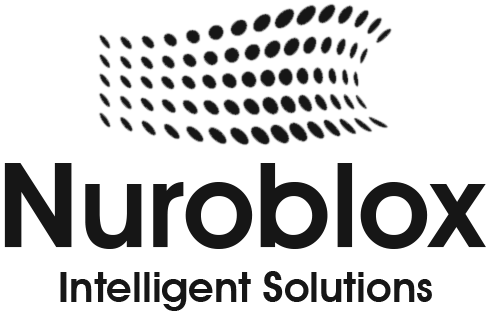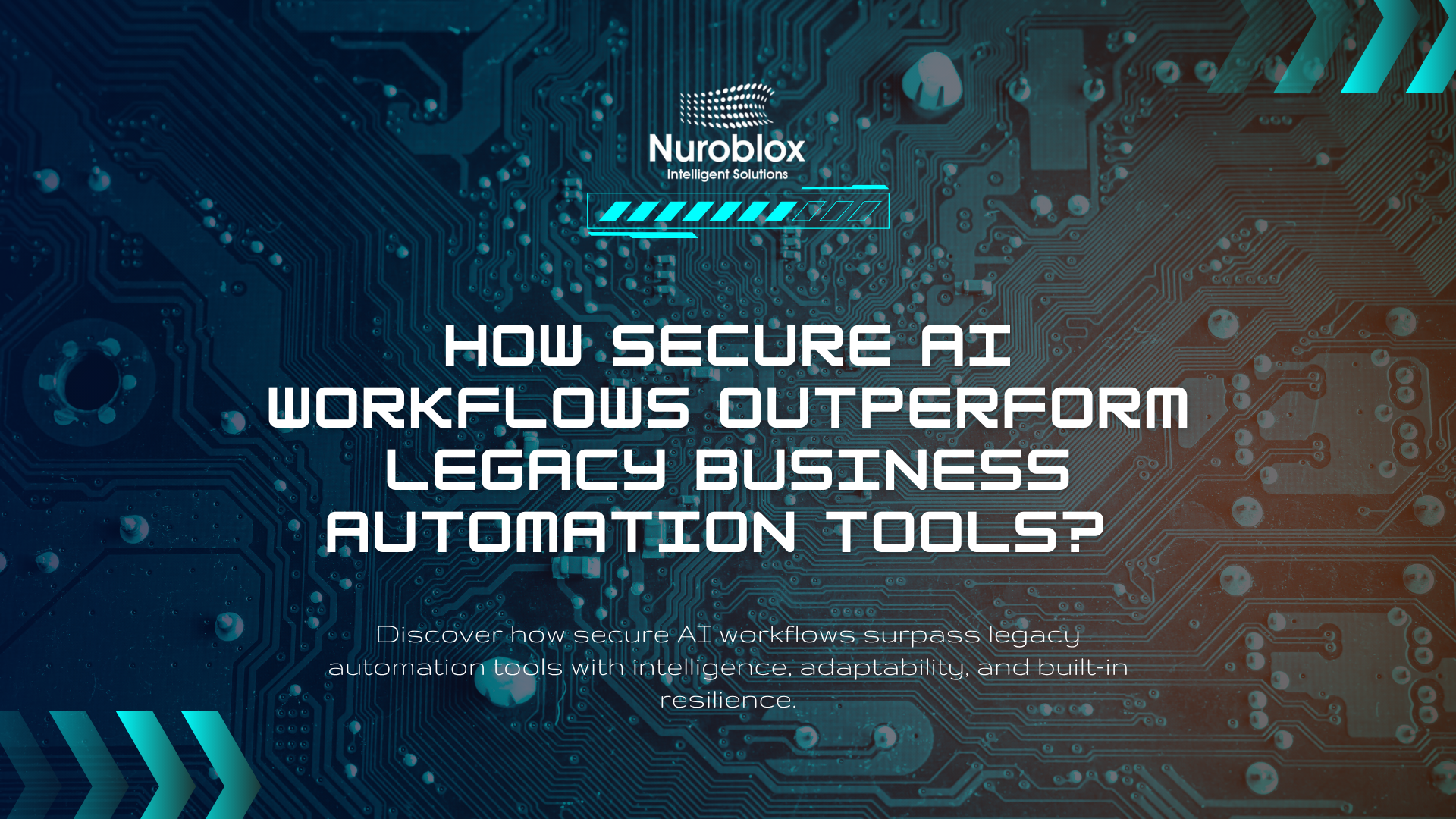How Secure AI Workflows Outperform Legacy Business Automation Tools?
In the relentless pursuit of enterprise efficiency, a dangerous paradox has emerged. While 96% of organizations plan to expand their use of AI, a staggering 53% cite data privacy as the single greatest barrier to full-scale adoption. This reveals a critical failure of legacy automation tools. For years, businesses have relied on Robotic Process Automation (RPA) and other script-based systems, only to find themselves trapped by brittle, insecure, and ultimately inefficient technology. These tools, once seen as a quick fix, have become a significant source of operational risk and a bottleneck to innovation.
The era of simply automating tasks is over. The future belongs to intelligent, secure, and autonomous operations. Secure AI workflows represent this fundamental paradigm shift. They are not merely an incremental upgrade over legacy tools; they are a complete reinvention of how enterprises automate, built from the ground up on a foundation of security, intelligence, and trust. This article dissects the critical failures of legacy automation and demonstrates the architectural and performance superiority of secure AI workflows, providing a data-driven case for why they are the only viable path forward for the modern enterprise.
The Crippling Limitations of Legacy Business Automation
Legacy automation, primarily driven by traditional RPA, promised efficiency but delivered a hidden tax of complexity and risk. These systems are fundamentally flawed, acting as a fragile layer over existing processes rather than a true transformation engine.
Brittleness and High Maintenance
Legacy RPA bots are notoriously fragile. They depend on stable user interfaces (UIs) and predictable workflows. A minor change to an application, a button moving a few pixels or a field name being updated can cause the automation to break, leading to production outages. This “script rot” forces QA and IT teams into a costly, reactive cycle of endless maintenance, where more time is spent fixing broken bots than building new automation. Instead of scaling efficiency, organizations find themselves scaling chaos and technical debt.
Pervasive Security Vulnerabilities
Designed for a simpler era, legacy systems are riddled with security gaps. They often operate as data silos, and RPA bots that scrape and move information between them can inadvertently expose sensitive data if not perfectly secured. These platforms frequently lack modern encryption, granular access controls, and robust audit capabilities. As a result, 36% of global businesses face increased security vulnerabilities due to their inability to defend against sophisticated cyber threats with outdated systems. Each bot becomes a potential attack vector, expanding the organization’s risk surface with every deployment.
Spiraling Costs and Stagnant ROI
The initial cost savings from legacy automation are often a mirage. While RPA can be cheaper to start, the total cost of ownership (TCO) quickly explodes due to high licensing fees, constant maintenance, and the need for specialized developers. Furthermore, manual compliance activities, which legacy tools do little to solve, consume 15–20% of an organization’s operational budget. Forrester reports that while some RPA projects see a return, many more see ROI erode as the cost of managing “bot sprawl” and maintenance overhead cancels out the initial labor savings.
Inability to Handle Complexity
The most significant failure of legacy tools is their lack of intelligence. They are fundamentally rule-based, capable of automating only the most repetitive, structured tasks. They cannot interpret unstructured data, make complex judgments, or adapt to dynamic conditions. This severely limits their impact, leaving the vast majority of complex, decision-driven enterprise workflows untouched. According to McKinsey, up to 50% of enterprise workflows are ripe for automation, a potential that rigid, unintelligent tools can never unlock.
The Architectural Superiority of Secure AI Workflows
Secure AI workflows are not just “smarter” bots; they are architected on entirely different principles. Security, intelligence, and governance are not afterthoughts; they are the core of the system.
Security by Design – The Zero-Trust and Privacy-First Core
Unlike legacy systems where security is bolted on, secure AI workflows are built on a “never trust, always verify” Zero-Trust architecture. Every action and data request by an AI agent must be authenticated and authorized. Key architectural pillars include –
- End-to-End Encryption – Data is protected with standards like AES-256 at rest and TLS 1.3 in transit, ensuring information is unreadable to unauthorized parties.
- Data Minimization – AI agents are designed to access only the absolute minimum data required for a task, dramatically reducing the attack surface.
- Private Execution Environments – AI models operate in isolated, secure enclaves (on-premise or private cloud), preventing data leakage and avoiding reliance on public APIs that may train on enterprise data.
Leveraging Privacy-Enhancing Technologies (PETs)
Secure AI workflows employ advanced cryptographic techniques to protect data even while it’s being used, a capability far beyond legacy tools. These Privacy-Enhancing Technologies (PETs) include –
- Homomorphic Encryption – Allows computations on fully encrypted data without ever decrypting it, offering the ultimate level of data protection.
- Federated Learning – Enables AI models to learn from decentralized data sources without the raw data ever leaving its secure environment.
- Differential Privacy – Adds statistical “noise” to data outputs, making it impossible to reverse-engineer information to identify individuals.
Intelligence and Adaptability – From Brittle Scripts to Autonomous Agents
Where legacy RPA uses rigid scripts, secure AI workflows use agentic AI autonomous agents that can plan, reason, and adapt. AI orchestration platforms manage these multi-agent systems, allowing them to collaborate on complex workflows. This enables –
- Handling Unstructured Data – AI agents can understand and process invoices, emails, and customer feedback.
- Dynamic Adaptation – Instead of breaking when an application UI changes, AI agents can understand the new interface and adapt their actions autonomously.
- Intelligent Decision-Making – AI can handle complex, judgment-based tasks like fraud detection or dynamic resource allocation, moving far beyond simple, rule-based processes.
End-to-End Governance and Auditability
Secure AI workflows provide complete, immutable audit trails for every decision and action taken by an AI agent [Source – NuroBlox Blog, 2025]. This real-time visibility is critical for satisfying complex regulatory frameworks like GDPR, HIPAA, and SOX. Explainable AI (XAI) frameworks ensure that the logic behind every AI decision is transparent and interpretable, eliminating the “black box” problem and providing irrefutable proof of compliance for regulators.
Quantifying the Performance Gap – Secure AI vs. Legacy Tools
The architectural differences translate into a massive, quantifiable performance gap. Secure AI workflows don’t just improve on legacy metrics; they create entirely new levels of value.
Exponential Gains in Efficiency and Productivity
The performance improvements are staggering. While legacy RPA is 5-20 times faster than a human, modern AI orchestration delivers 2-7 times better performance than traditional RPA in complex areas like dynamic resource allocation and intelligent process routing. Furthermore, enterprises implementing agentic AI report 3x to 6x returns on investment and 25-30% productivity improvements by automating complex, end-to-end processes that were previously untouchable.
Drastic Reductions in Operational and Security Costs
Secure AI workflows crush the hidden costs that plague legacy systems. AI-first testing platforms can cut QA labor by over 90% and deliver tests up to 100 times faster by autonomously repairing scripts. In finance, one firm used AI workflow automation to cut processing costs by 75% while simultaneously reducing errors. By automating compliance monitoring and providing audit-ready logs, these systems also drastically reduce the 15-20% of operational budgets typically lost to manual compliance efforts.
Unlocking Strategic Value and Agility
The ultimate advantage of secure AI workflows is their ability to transform automation from a cost center into a strategic enabler. By automating complex, mundane tasks, they free up human talent to focus on innovation, strategy, and high-value customer interactions [Source – NuroBlox Blog, 2025]. This leads to faster time-to-market, improved decision-making, and a sustainable competitive advantage built on operational excellence and organizational agility.

Transitioning from legacy tools to secure AI workflows requires a strategic, deliberate approach.
Adopt a Phased, Value-Driven Approach
Don’t attempt a “big bang” replacement. Start by identifying high-impact, low-risk processes where the limitations of legacy tools are most apparent. Focus on workflows that involve unstructured data, complex decision-making, or stringent compliance requirements. Use early wins to build momentum and demonstrate ROI.
Prioritize a Security-First Platform
Your choice of technology is paramount. Select an enterprise-grade AI automation platform that offers a private, secure environment for AI agents. Prioritize solutions with built-in capabilities for end-to-end encryption, granular role-based access control (RBAC), and frameworks that ensure compliance with industry regulations from day one.
Foster a Culture of Collaboration
Successful AI automation is not just an IT project; it is a business transformation initiative. It requires deep collaboration between IT, security, and business operations teams. Establish a center of excellence (CoE) to create standardized governance policies, share best practices, and ensure the automation strategy aligns with overarching business goals.
Conclusion
The evidence is conclusive. Legacy business automation tools are a dead end. They are brittle, insecure, costly, and fundamentally unintelligent. Continuing to invest in them is not just inefficient; it is a strategic liability. Secure AI workflows offer a fundamentally superior path, one that is built for the complexity and risks of the modern digital landscape. By embedding security, intelligence, and governance into their very architecture, they deliver unparalleled performance and unlock transformative value. The choice for enterprise leaders is clear.
Is your current automation strategy a secure asset for future growth, or is it a legacy liability waiting to unfold?


